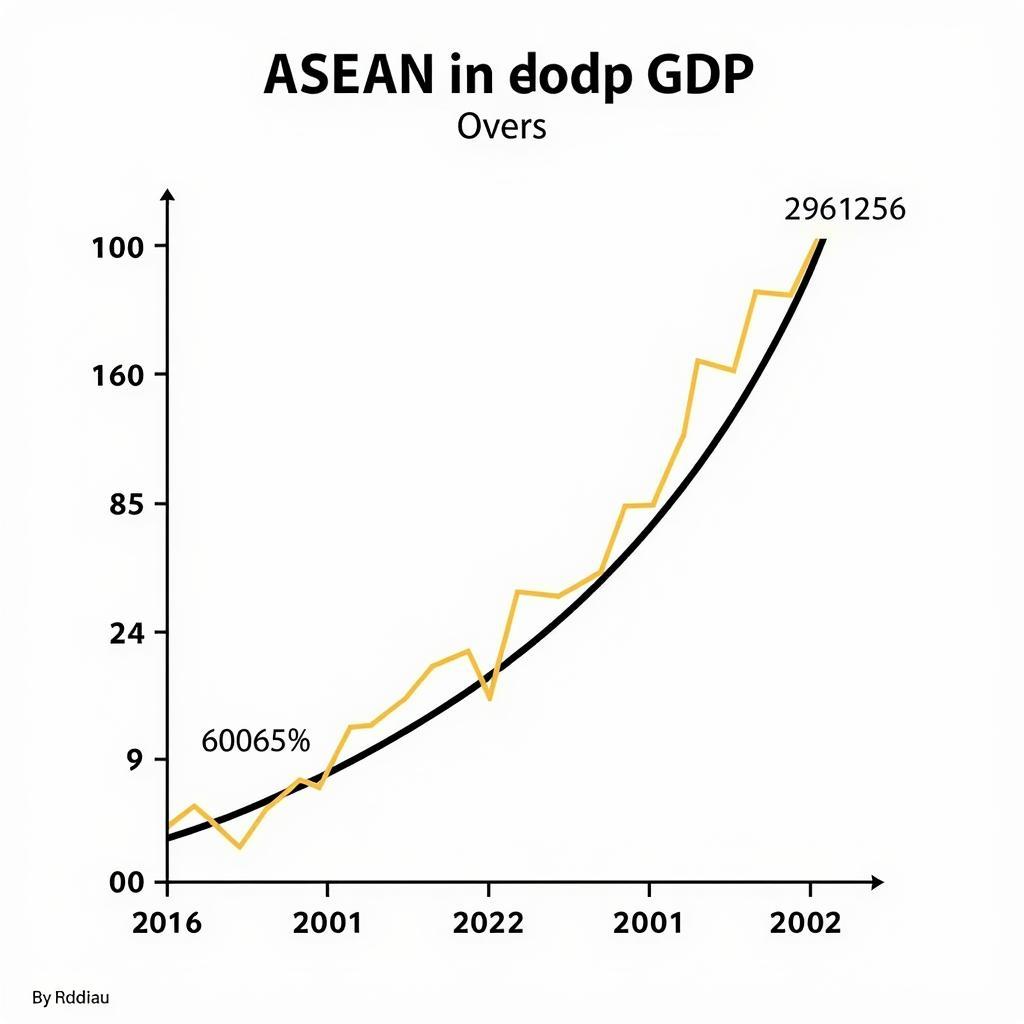The Association of Southeast Asian Nations (ASEAN) stands as a testament to regional cooperation and integration in Southeast Asia. Established in 1967, ASEAN comprises 10 member states: Brunei Darussalam, Cambodia, Indonesia, Laos, Malaysia, Myanmar, Philippines, Singapore, Thailand, and Vietnam. This diverse region, home to over 660 million people, boasts a rich tapestry of cultures, languages, and religions.
 ASEAN Economic Growth
ASEAN Economic Growth
Uniting for Shared Goals: The ASEAN Way
ASEAN’s journey has been shaped by its core principles, often referred to as the “ASEAN Way.” These principles emphasize consensus-based decision-making, non-interference in internal affairs, peaceful dispute resolution, and a commitment to regional peace and stability. This collaborative approach has enabled ASEAN to navigate complex geopolitical challenges and foster dialogue among its member states.
ASEAN’s significance extends far beyond its geographical boundaries. The region’s strategic location at the crossroads of the Indian and Pacific Oceans positions it as a key player in global trade and geopolitics. With a combined GDP of over US$3 trillion, ASEAN is a dynamic economic force, attracting significant foreign investment and driving regional growth.
 ASEAN Cultural Diversity
ASEAN Cultural Diversity
Pillars of Progress: Shaping ASEAN’s Future
ASEAN’s commitment to regional integration is reflected in its three pillars:
1. ASEAN Political-Security Community (APSC): Aims to enhance political and security cooperation among member states, promoting peace, stability, and good governance.
2. ASEAN Economic Community (AEC): Seeks to create a single, integrated market and production base, facilitating free flow of goods, services, investments, and skilled labor within the region.
3. ASEAN Socio-Cultural Community (ASCC): Focuses on fostering a shared ASEAN identity and promoting people-to-people connectivity through collaborations in education, culture, health, and social development.
These pillars represent ASEAN’s holistic approach to development, recognizing the interconnectedness of political stability, economic prosperity, and social progress.
Engaging the World: ASEAN’s Expanding Partnerships
Recognizing the importance of multilateralism, ASEAN actively engages with external partners through dialogue platforms and free trade agreements. Its strategic partnerships with major powers like the United States, China, Japan, and India underscore its growing geopolitical weight.
The ASEAN Regional Forum (ARF), a key platform for security dialogue in the Asia-Pacific, exemplifies ASEAN’s role in fostering peace and stability. Similarly, the East Asia Summit (EAS) brings together ASEAN and its dialogue partners to discuss strategic issues and strengthen regional architecture.
Navigating Challenges: Towards a Resilient ASEAN
Despite its achievements, ASEAN faces numerous challenges, including narrowing development gaps, addressing transboundary issues like environmental degradation and transnational crime, and managing geopolitical tensions. However, ASEAN’s commitment to dialogue, cooperation, and a rules-based regional order provides a foundation for navigating these complex issues.
“ASEAN’s strength lies in its ability to bring together diverse nations under a common platform, fostering collaboration and understanding,” states Dr. Lina Wong, a Southeast Asian Studies expert. “While challenges exist, ASEAN’s spirit of unity and shared vision offer a beacon of hope for a more peaceful and prosperous future.”
Conclusion: ASEAN’s Enduring Importance
Asean And Its Significance in the global landscape continue to grow. As the region embraces innovation, technological advancements, and sustainable development, ASEAN is well-positioned to play a pivotal role in shaping the future of the Asia-Pacific and beyond. Its commitment to regional integration, its proactive engagement with global partners, and its enduring spirit of cooperation make ASEAN a vital force for peace, stability, and prosperity in the 21st century.
FAQs about ASEAN
1. What is ASEAN’s primary objective?
ASEAN aims to accelerate economic growth, social progress, and cultural development among its member states, while promoting regional peace and stability.
2. How does ASEAN benefit its member countries?
ASEAN provides a platform for economic cooperation, political dialogue, and cultural exchange. It facilitates trade, attracts foreign investment, and enhances regional security for its members.
3. What are some of ASEAN’s notable achievements?
ASEAN has established a free trade area, launched initiatives to narrow the development gap, and played a key role in maintaining regional peace and stability.
4. How can I learn more about ASEAN?
You can visit the official website of the ASEAN Secretariat (www.asean.org) or explore resources from reputable institutions like the ISEAS-Yusof Ishak Institute and the Center for Strategic and International Studies (CSIS).
5. What is the role of the ASEAN Secretariat?
The ASEAN Secretariat, located in Jakarta, Indonesia, serves as the administrative and coordinating body of ASEAN, supporting its various initiatives and programs.
For any assistance or inquiries related to ASEAN, please contact us at:
Phone Number: 0369020373
Email: [email protected]
Address: Thon Ngoc Lien, Hiep Hoa, Bac Giang, Vietnam
Our dedicated customer support team is available 24/7 to assist you.


